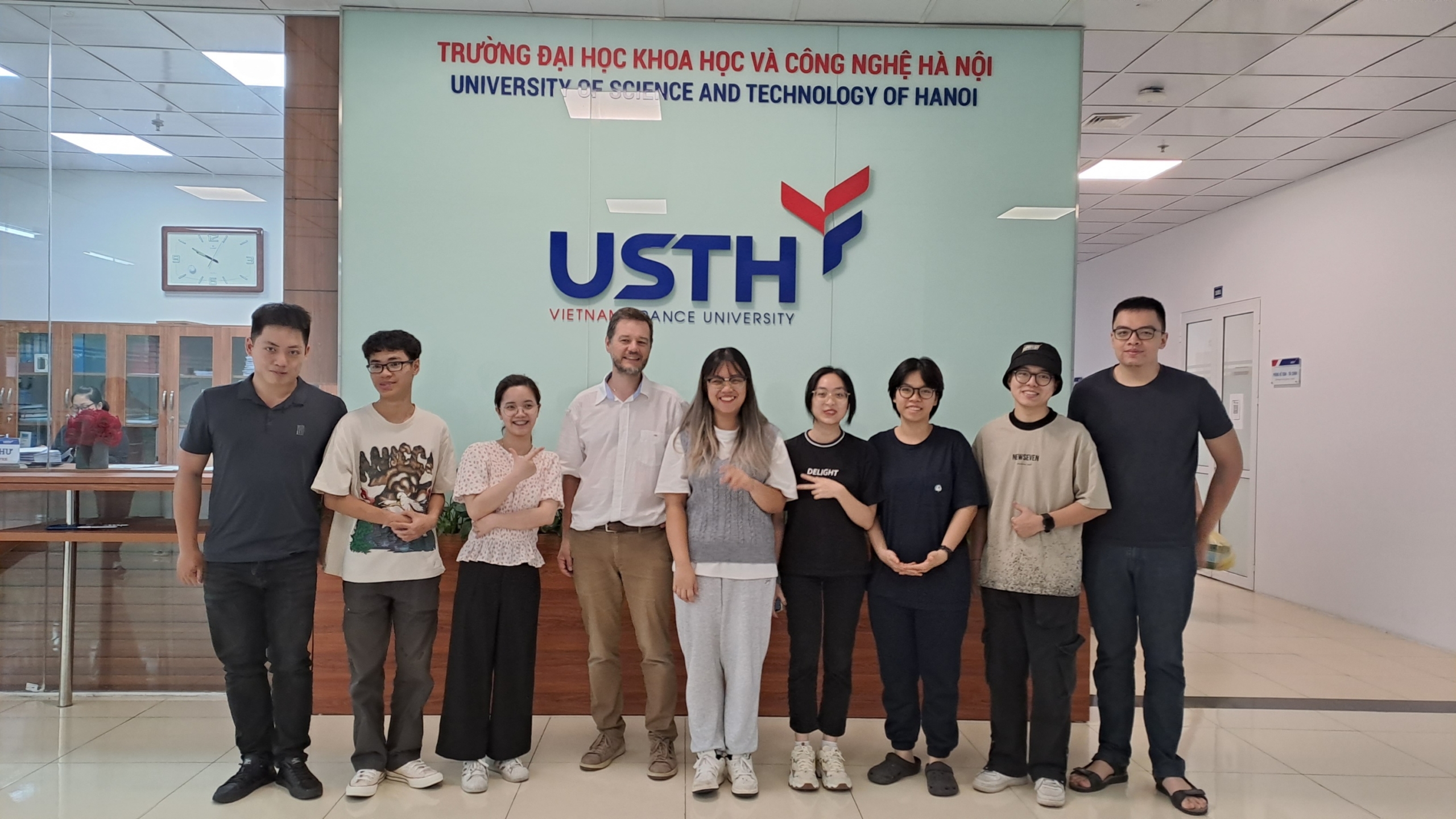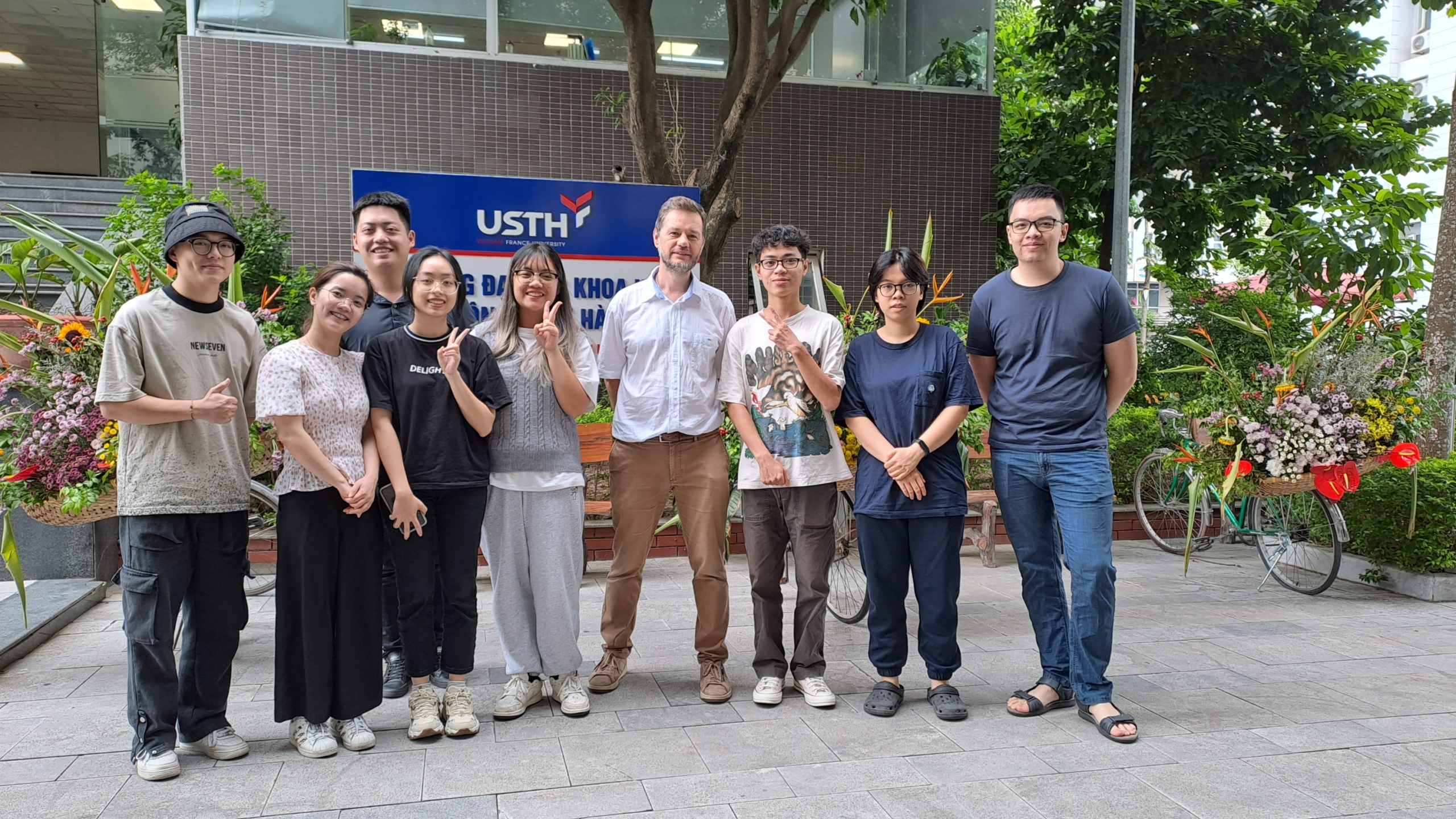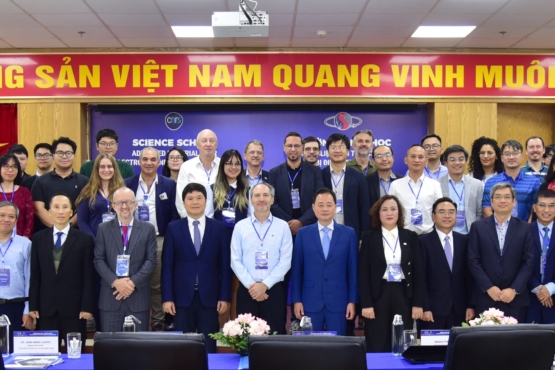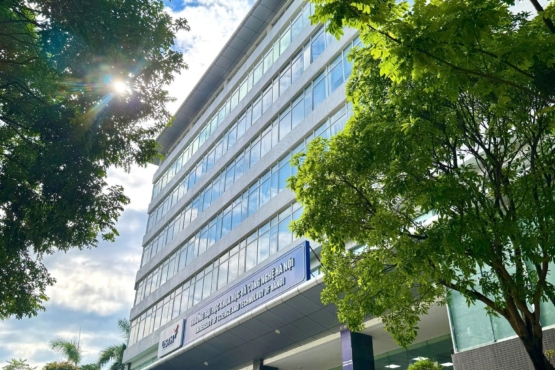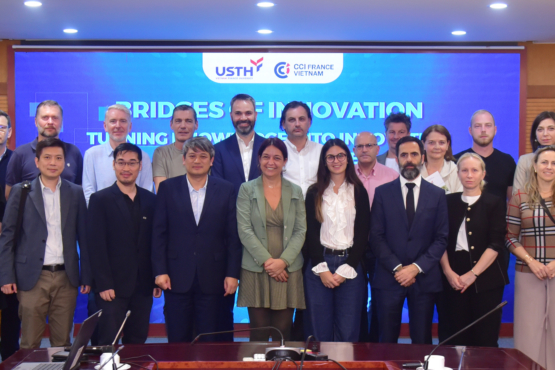On October 16, 2023, Department of Advanced Materials Science and Nanotechnology held a seminar on the topic of gold nanoparticles: “Insights about their electrostatic and plasmonic properties” featuring Prof. Olivier Pluchery, Department of Physics, Sorbonne University, Institute of NanoSciences in Paris, France as the speaker.
The seminar was part of Prof. Olivier Pluchery’s visit and teaching activities at USTH, where he delivered a course on Plasmonic and Nanophotonics for the Master’s program in Advanced Materials Science and Nanotechnology.
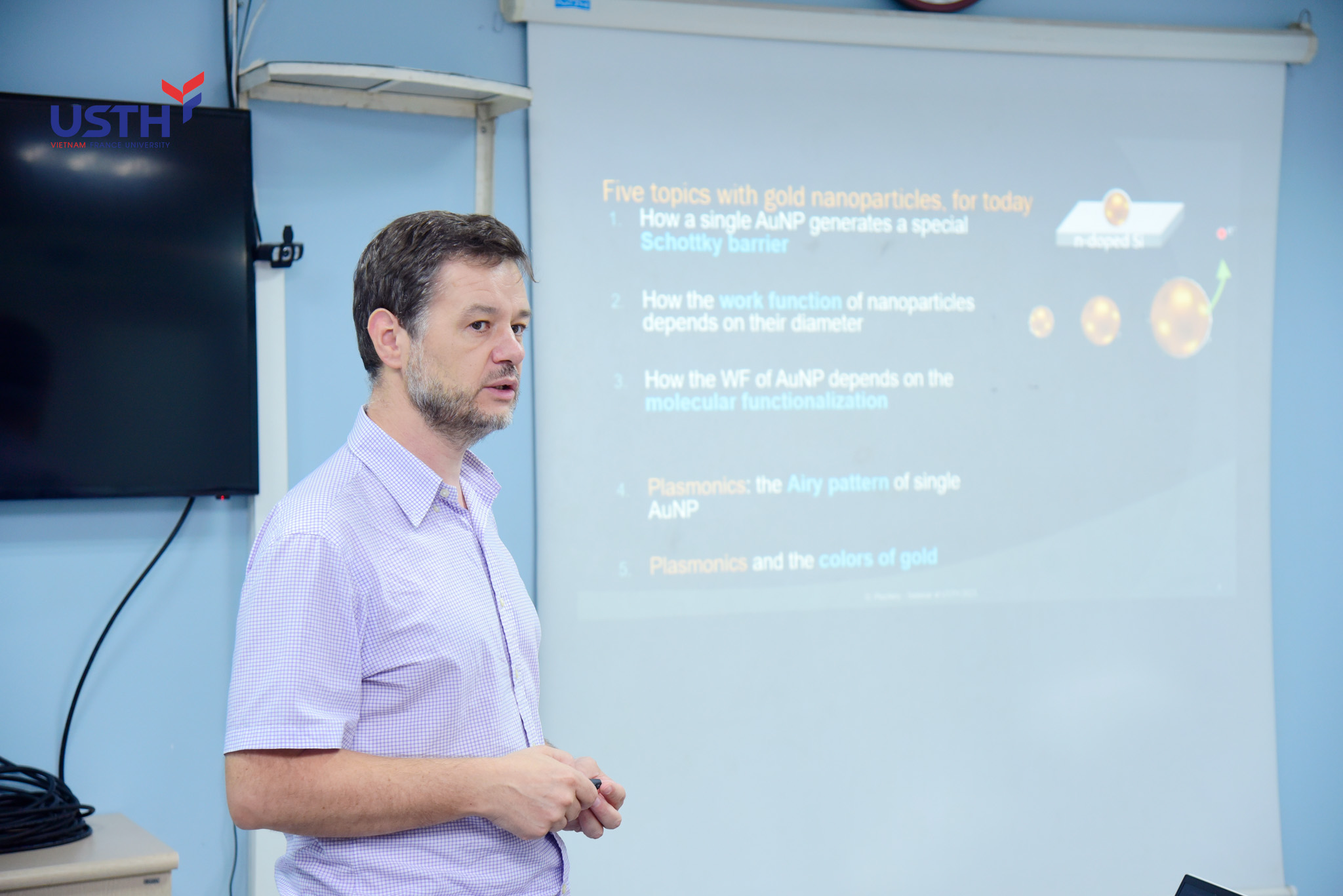
Prof. Olivier Pluchery holds a PhD in laser physics from the University of Paris-Saclay, earned in 2000. He conducted post-doctoral research at Bell-Labs in New Jersey, USA. Pluchery became an associate professor at Sorbonne University in 2002, later rising to full professorship in 2017. His research, based at the Institute of Nanosciences in Paris, centers on gold nanoparticles, particularly their electronic, electrical, optical, and plasmonic properties. Prof. Olivier Pluchery is known for his comprehensive course on plasmonics, and has authored numerous research papers and two books. He founded the Or-nano research network, holds a patent leading to the creation of Bichromatic, and is active in industry collaborations and in Systematic, a French optics and photonics network.
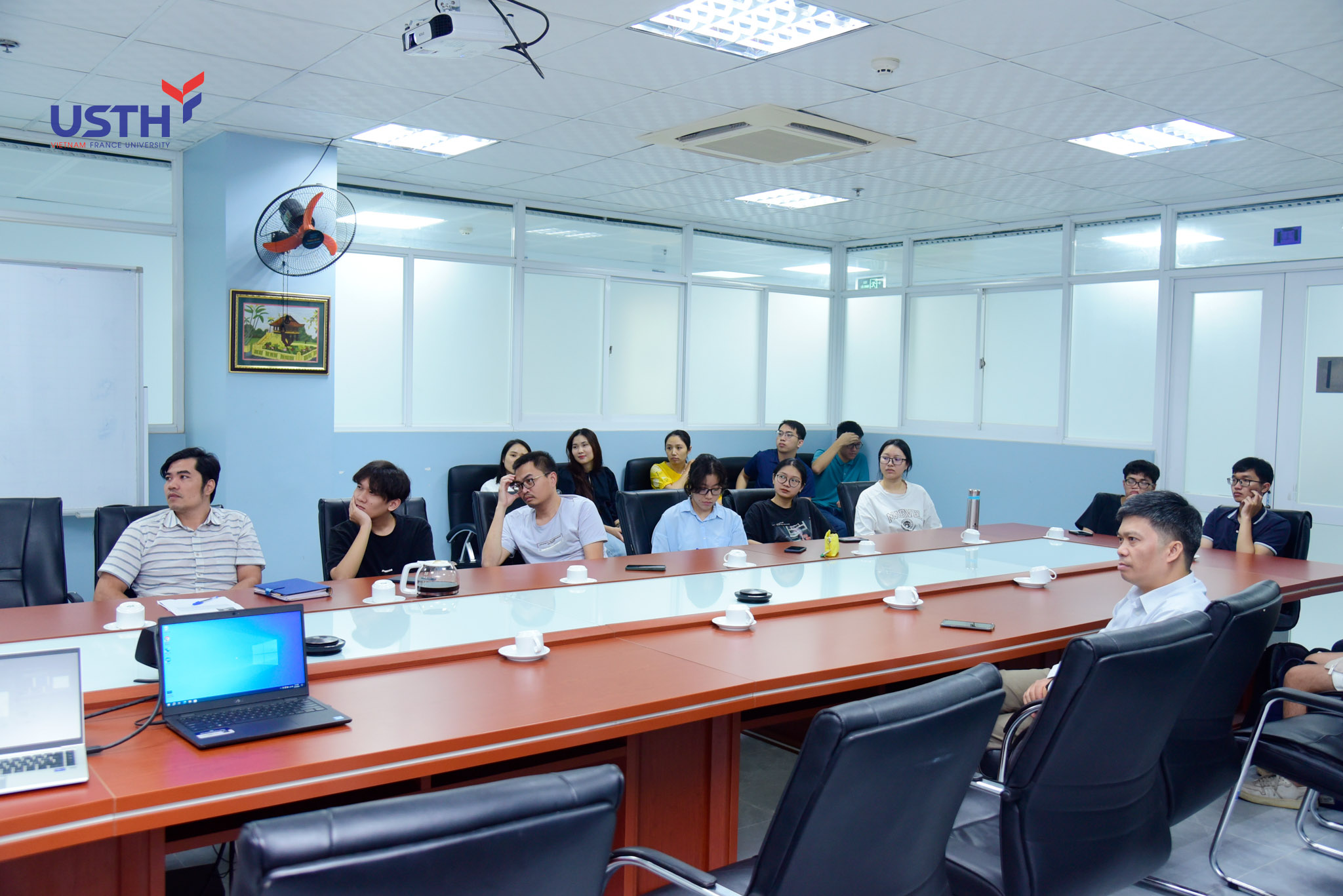
According to Prof. Olivier Pluchery, one crucial aspect of electronic properties in surfaces is their work function (WF). WF is well-defined for a pure material with a planar and infinite interface. However, WF becomes unclear when surfaces are rough, when they contain local charges, or when they are functionalized with molecules. This is the case for nanoparticles. Understanding the WF is essential because it profoundly impacts a surface’s chemical reactivity. Moreover, it plays a pivotal role in electric transport, particularly in applications like photovoltaics.

At the seminar, Prof. Olivier Pluchery used gold nanoparticles as an exemplary metallic nano-object to facilitate a better grasp of the parameters governing WF at the nanoscale. He outlined a series of experiments conducted with Scanning Tunneling Microscopy (STM), Atomic Force Microscopy (AFM), and Kelvin Probe Force Microscope (KPFM) to explain the effects of factors such as nanoparticle size, the presence of surfactant molecules, and interactions with a surface.
Furthermore, Prof. Olivier Pluchery highlighted the remarkable plasmonic properties exhibited by gold nanoparticles. He went on to discuss recent findings from his research group, focusing on aspects related either to the coloration of assemblies of gold nanoparticles or to the optical characteristics of individual nanoparticles. These insights, he concluded, contribute significantly to a deeper comprehension of the intricate realm of nanoscale electronic properties and pave the way for advancements in various technological applications.
After the presentation, Prof. Olivier Pluchery addressed the questions from the participants and thanked them for attending the seminar.
